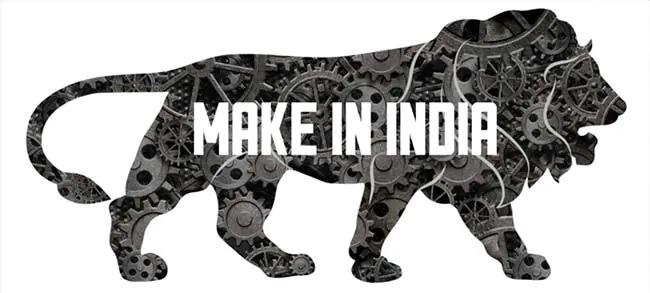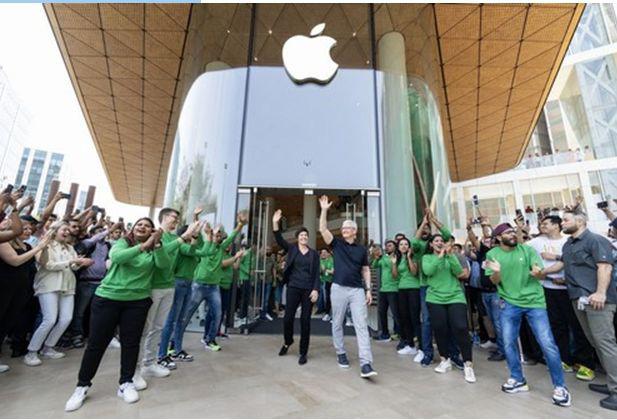
7 minute read
MAKE IN INDIA
As world economies restart their engines in a bid to regain lost ground due to the Covid-19 pandemic, India too shows signs of economic buoyancy and promise. India’s Make in India initiative holds a key to the global economic revival, something that should interest Australian government ministries, corporate sector, entrepreneurs, institutions seeking R&D collaborations and Australia Inc in general, among others. India assumes greater importance as several major world economies including American, Japanese, German, British and South Korean look to move out and diversify their businesses from China. India has jumped to 63rd rank in the World Bank’s Ease of Development 2020 report, and has also been ranked as the 9th largest recipient of Foreign Direct Investment destinations in 2019 by the World Investment Report 2020 of the United Nations Conference on Trade and Development (UNCTAD).
Mobile production crosses 2 bn units under ‘Make in India’ initiative: Report

New Delhi, Aug 14 (IANS) 'Make in India' mobile phone shipments crossed the 2-billion cumulative units mark during 2014-2022, registering a 23 per cent Compound annual growth rate (CAGR), latest research showed on Monday.
The huge internal demand, increasing digital literacy and government push are the major reasons for this growth. As a result, India has become the second-biggest mobile phoneproducing country, according to Counterpoint Research.
"In 2022, more than 98 per cent of shipments in the overall market were 'Make in India', compared to just 19 per cent when the current government took over in 2014," said Research Director Tarun Pathak. "Local value addition in India currently stands at an average of more than 15 per cent, compared to the low single digits eight years ago," he informed. Many companies are setting up units in the country for manufacturing mobile phones as well as components, leading to growing investments, increasing jobs and overall ecosystem development.
The government now intends to capitalise on its various schemes to make India a ‘semiconductor manufacturing and export hub’.
"Going forward, we may see increasing production, especially for smartphones, as India gears to bridge the urban-rural digital divide and also become a mobile phone exporting powerhouse," Pathak noted.
Under the 'Make in India' initiative, the government introduced the Phased Manufacturing Programme and increased import duties on completely built units and some key components over the years to push local manufacturing and value addition.
The government introduced the Production Linked Incentive (PLI) scheme for 14 sectors, including mobile phone manufacturing.
“Due to all this, exports from India have increased. Going forward, the government is focused on making India a semiconductor hub. It has proposed a semiconductor PLI scheme and now is focusing more on infrastructure with a proposed investment of $1.4 trillion,” said senior analyst Prachir Singh.
Amazon says digitised 62 lakh MSMEs, created over 13 lakh jobs in India to date

New Delhi, Aug 10 (IANS) Amazon on Thursday said that it has cumulatively digitised over 62 lakh (6.2 million) micro, small and medium enterprises (MSMEs), enabled nearly $8 billion in cumulative e-commerce exports and created more than 13 lakh (1.3 million) direct and indirect jobs in India till date.
Amazon had pledged to digitise one crore (10 million) MSMEs, enable $20 billion in cumulative e-commerce exports and create 20 lakh (2 million) jobs in India by 2025 and is well on track to fulfil these pledges.
“As we continue to work with lakhs of micro-entrepreneurs, small businesses and startups across the country, we remain committed to bringing new tools, technology and innovation that will unleash the entrepreneurial spirit of Indian businesses, boost exports from the country and help create jobs at scale,” Manish Tiwary, Country Manager India Consumer Business, Amazon India, said in a statement. About two years ago, the tech giant announced the $250 million Amazon Smbhav Venture Fund to invest in technology-led startups passionate about unlocking the possibilities of a digital India. Over the last 24 months, the Venture Fund has made several investments, including ‘FreshtoHome’, ‘XYXX’, ‘Hopscotch’, ‘Fitterfly’, ‘Cashify’, ‘MyGlamm’, ‘M1xchange’ and ‘smallcase’.
BGMI maker Krafton pledges $150 mn investment in India

New Delhi, Aug 10 (IANS) BGMI game maker Krafton on Thursday pledged $150 million investment in India over the next two to three years.
The company said it will invest in the gaming and startup ecosystem in the country, focusing on content-based platforms and deep tech.
“We firmly believe in India’s potential as a key player in the global gaming and technology industry, and our commitment to invest an additional $150 million over the next two to three years reflects our dedication to fueling this growth,” said Sean Hyunil
Sohn, CEO, Krafton India.
“We believe in the power of Indian IPs and content in making a lasting global impact,” he added. Since its first investment in March 2021, the company has infused approximately $140 million into 11 innovative startups. Beyond game development studios, the company’s investments span diverse and complementary sectors, including, Esports, multimedia entertainment, content creation and audio platforms.
In recent months, Krafton has expanded its focus to include the creator economy and deep tech, actively supporting startups in these emerging segments.
Investments in country rose by 65% between 2014-15 and 2022-23

New Delhi, Aug 6 (IANS) Investments in the country have risen by 65 per cent between 2014-15 and 2022-23, from Rs 32,78,096 crore to Rs 54, 34,691 crore.
The government and private sector together invest in the economy, which is indicated by Gross Fixed Capital Formation (GFCF) in the Indian economy. This GFCF was Rs 32.78 lakh crore (constant 2011-12 prices) in 201415, which rose by 65 per cent to Rs 54.35 lakh crore in 2022-23 (as per provisional estimates).
To spur investments in the country, the government also implements the scheme for special assistance to states for capital expenditure and a scheme for special assistance to states for capital investment.
Centre has approved and released special assistance in the form of 50-years interest free loan for capital expenditure on capital projects, including capital projects pertaining to sectors like health, education, irrigation and power, etc.
Foreign direct investments (FDI) into India have also continuously risen since 2014-15.
In the last seven financial years between 2014-15 and 2021-22, over $443 billion worth of FDI inflows have come into the country.
set June quarter records in India driven by robust iPhone sales: Tim Cook

Cupertino (California), Aug 4 (IANS) Apple has set a June quarter records in India, driven by the robust sales of iPhones, its CEO Tim Cook has said. During the company’s fiscal 2023 third quarter results late on Thursday, Cook said that the performance of “our new stores in India this spring exceeded our expectations”.
Apple opened its own-branded Mumbai and Delhi retail stores in the country in April this year, which met with great enthusiasm. On a specific question on the potential of India, Cook said: “You know we did hit a June quarter revenue record in India and we grew strong double digits. We also opened our first two retail stores during the quarter and of course it’s early going currently, but they are currently beating our expectations in terms of how they are doing”.
He further said that the company continues to work on building out the channel and putting more investment in its direct-toconsumer offers in the country.
“If you look at it, it’s the second largest smartphone market in the world and we ought to be doing really well there and we are very pleased with our growth there,” said Cook “We still have a very, very modest and low share in this smartphone market, so I think it’s a huge opportunity for us. And we are putting in all of our energies to make that occur,” he added.
Apple, with the highest average selling price (ASP) of $929, registered a massive 61 per cent YoY growth in India in April-June period, according to the IDC.
India is now among Apple’s top 5 markets globally as the iPhone maker continued to lead the ultra-premium segment (Rs 45,000 and above).
The company has also broken local manufacturing records. In May, iPhone exports reached a record Rs 10,000 crore, pushing the total mobile shipments from the country to Rs 12,000 crore in that month.










